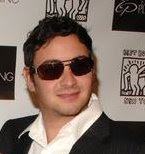Technique;
I feel that technique expansion is a great way to increase our vocabulary as artists. In language, technique assists us in being clear and concise speakers. A more defined technique is like having good diction. The more tools we have to express ourselves, the better, making it possible to use our language to express our exact message.
Tonguing;
As I’ve said in prior Blogs, there are many paths to a similar place. With regard to single and multiple tonguing, I practice standard upkeep with the Arban’s book. I'd also suggest making up your own exercises. Expand your personal exercise by varying range, speed and velocity. Variety is key!
I use the syllable DuhT when single tonguing. DuhT or DahT defines the end of a note while stationing the tongue for the next one. It provides a beautifully shaped note and reinforces an open oral concept. I don’t anchor tongue, but I know many people who’ve implemented it with much success! DuhT is conceptual in nature and can be used with any tonguing method.
Often overlooked is the end of a note. Without defining the end of a note, rhythmic integrity can be lost (especially in a live acoustic environment.) It also clears up the grey area of legato and staccato tongue note length that seems to plague the young music world.
">
I’ve stayed away from a ta-ka and tu-ku for multiple tonguing. I’ve had luck using the syllable Da-Ga. I’m able to achieve an even, steady sound throughout registers. The Da-Ga syllable happens further back in my mouth than ta-ka, which seems to increase my agility especially when intervallic leaps are a factor.
">
For any tongued passage, my airflow remains the same as if I’m slurring. Be sure you can execute the passage slurred. The tongue is only used as a defining character or texture between notes. The tongue should frame what’s already there.


No comments:
Post a Comment